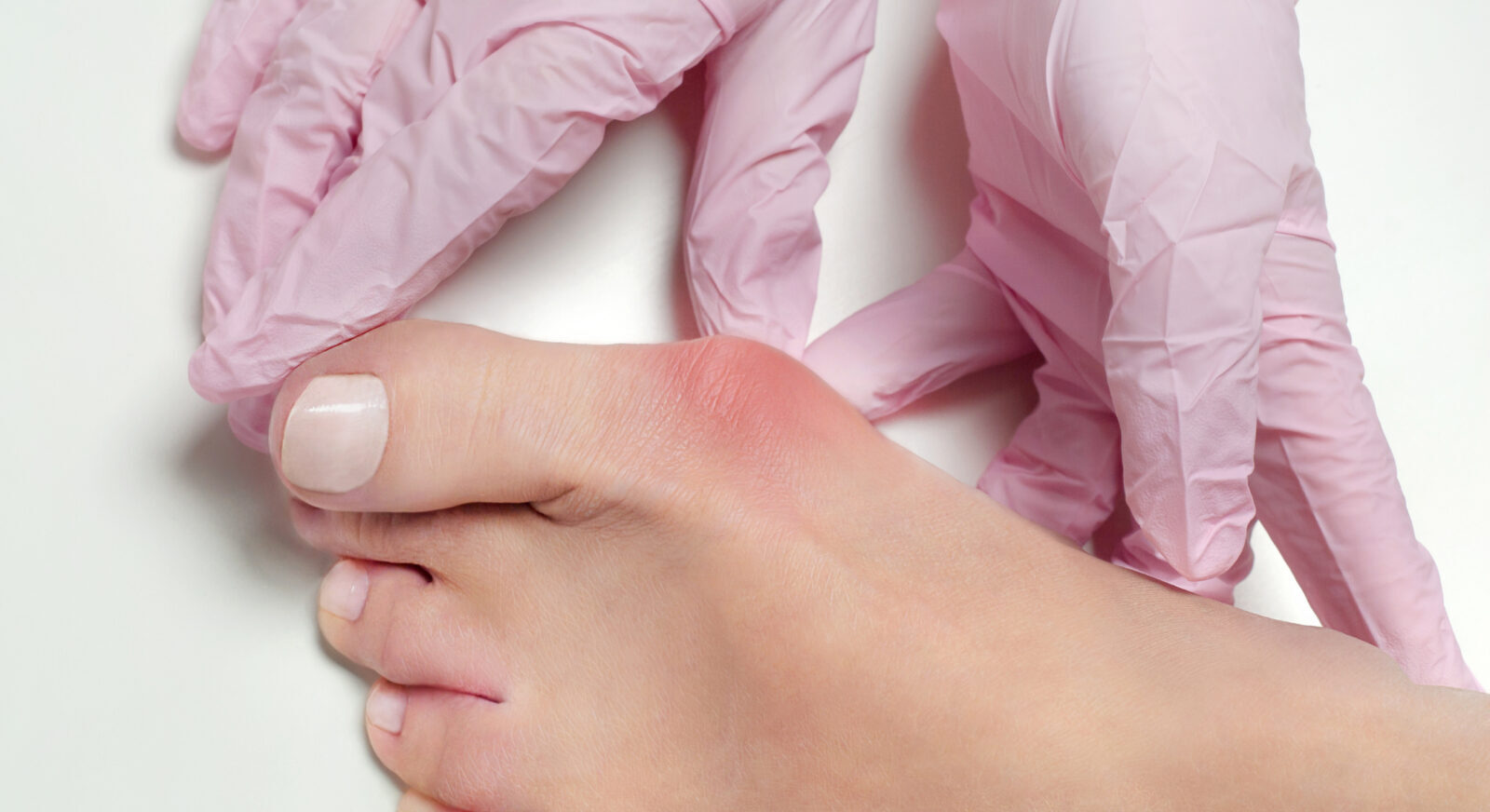
As you get older, you may experience the emergence of various new aches and pains. Having spent a lifetime standing, walking, and running, your feet have carried the weight of your entire body throughout the years, eventually, leading to the development of painful foot conditions such as bunions.
In Australia, more than 80 per cent of older adults suffer from bunions, prompting those affected to search for ways to prevent their occurrence or alleviate the pain and discomfort.
If you’ve hit this bump in the road of ageing, the good news is there are many treatments available that offer bunion relief.
So to help you put your best foot forward, we chatted with podiatrist Dr Brad Shaeffer to find out more about the painful condition and what you can do about it.

Bunions, or Hallux Valgus, may sound like a small matter but they can be incredibly painful – even when you are sitting or lying down – and make it difficult to find shoes that fit without putting more pressure on the area.
In simple terms, a bunion forms when the joint of the big toe moves out of place due to pressure, causing the affected toe to develop a bulging bump and point outward towards the other smaller toes. They can also form at the base of the little toe, where they are called a bunionette.
Because bunions are a progressive deformity, they usually get worse, and, in some cases can even lead to more serious problems such as arthritis in the affected toe.
“Many of my patients who once enjoyed being active eventually have trouble walking and performing daily activities as their bunion worsens,” Dr Shaeffer says.
“They also might notice that they aren’t able to wear certain shoes including boots, high heels, or narrow flats anymore because they can’t physically fit their foot into them anymore.”
The most common symptoms of bunions include swelling, redness or soreness around your big toe joint, thick skin on the underside of your big toe, calluses on your second toe (often caused by your big toe and second toe overlapping) and persistent foot pain.
Multiple factors can contribute to the development of bunions, these include:
Typically, bunions form gradually over a long period of time as the bones in the foot shift and certain ligaments become stretched while others tighten.
And while wearing high heels and tight shoes may push the big toe into a bunion position, Dr Shaeffer clarifies that heels and narrow shoes don’t cause bunions, these abnormalities actually run in the family.
Bunions tend to progress slowly over time and may deteriorate further in the absence of proper care, such as switching to comfortable shoes or utilizing orthotic devices. Factors like ageing, weight gain, and foot expansion can aggravate pre-existing issues or initiate the formation of bunions.
In rare cases, children or adolescents may develop bunions due to bone growth in a turned position, or they may result from a traumatic injury to the ligaments surrounding the big toe.

If you’re starting to develop unions, there there are a number of non-surgical options worth exploring before choosing to get surgery.
There are also several natural remedies that you can try that may help reduce the swelling of your bunion and ease the discomfort and inflammation they cause. Some of these include:
While non-surgical treatments may help relieve pain, they can’t improve the appearance of your foot or prevent a bunion from getting worse. In this case, surgery is another treatment option. Bunion surgery is often carried out as a day procedure, meaning you can go home the same day, and it’s usually done under local anaesthesia.
According to Dr Schaeffer, during the initial evaluation and treatment in the office, podiatrists often recommend that patients try conservative options first. These include buying wider shoes, padding or orthotics to accommodate the deformity and reduce pain. If conservative options fail and the bunion is severe, surgical options are discussed.
“Traditionally, podiatric surgeons have used a procedure called 2D osteotomy where they shave down the protruding bone of the big toe and then cut and shift the bone over,” Dr Schaeffer explains.
“This gets rid of the cosmetic bump but doesn’t address the unstable joint in the foot that causes the bunion.
“These procedures can involve a recovery process where patients may remain non-weight-bearing typically for 7-9 weeks. However, a growing number of surgeons are now performing a relatively new procedure called 3D Bunion Correction.”
The 3D bunion correction procedure is growing in popularity in America, with hopes for it to come to Australia. The procedure returns your entire bone to normal 3D alignment and the unstable joint is secured with patented, titanium plates to allow patients to get back on their feet quickly (in a walking boot). Many patients are able to bear weight in a walking boot within two weeks of surgery and most are able to wear more comfortable shoes within six to eight weeks of surgery.
You should see a doctor about your bunions if you are experiencing significant pain, swelling, or stiffness in your feet, or if your bunions are affecting your ability to walk or engage in daily activities.
IMPORTANT LEGAL INFO This article is of a general nature and FYI only, because it doesn’t take into account your personal health requirements or existing medical conditions. That means it’s not personalised health advice and shouldn’t be relied upon as if it is. Before making a health-related decision, you should work out if the info is appropriate for your situation and get professional medical advice.